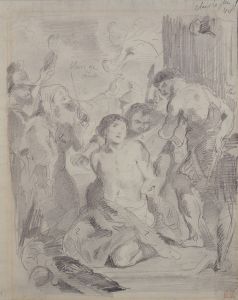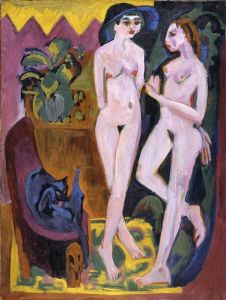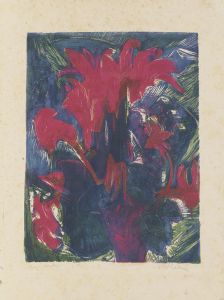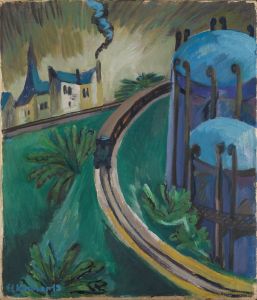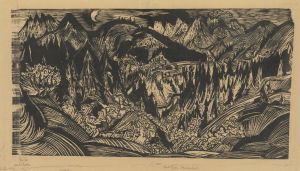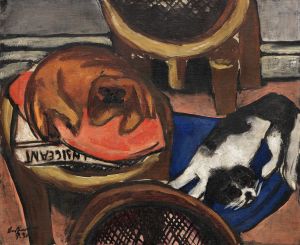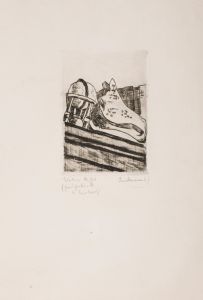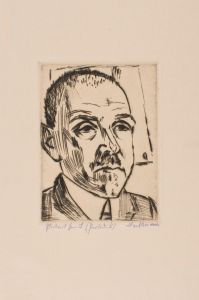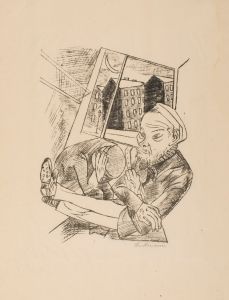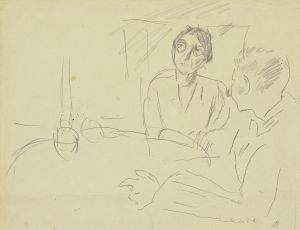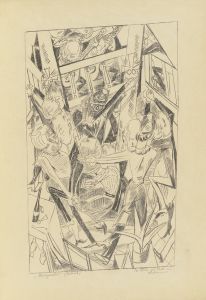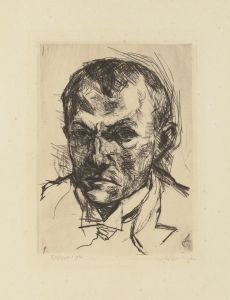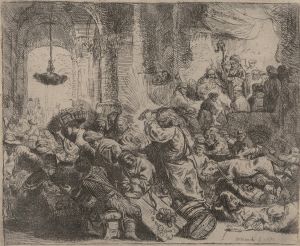
plate 3; The Street
A hand-painted replica of Max Beckmann’s masterpiece plate 3; The Street, meticulously crafted by professional artists to capture the true essence of the original. Each piece is created with museum-quality canvas and rare mineral pigments, carefully painted by experienced artists with delicate brushstrokes and rich, layered colors to perfectly recreate the texture of the original artwork. Unlike machine-printed reproductions, this hand-painted version brings the painting to life, infused with the artist’s emotions and skill in every stroke. Whether for personal collection or home decoration, it instantly elevates the artistic atmosphere of any space.
Max Beckmann's "The Street" is a notable work from the German painter, created in 1921. Beckmann, a prominent figure in the New Objectivity movement, is known for his expressive and often somber depictions of the human condition, particularly in the aftermath of World War I. "The Street" is a prime example of his ability to capture the complexities of urban life and the psychological tension of the era.
"The Street" portrays a bustling urban scene, filled with a variety of characters that reflect the social dynamics and tensions of the time. The painting is characterized by Beckmann's distinctive style, which combines elements of Expressionism and Realism. His use of bold lines, stark contrasts, and a somewhat distorted perspective creates a sense of unease and intensity, drawing the viewer into the chaotic energy of the street.
In this painting, Beckmann employs a rich, yet somewhat muted color palette, dominated by earthy tones and dark shades. This choice of colors enhances the somber mood of the scene, suggesting the underlying struggles and anxieties of the people depicted. The figures in the painting are rendered with a raw, almost caricature-like quality, emphasizing their individuality and the emotional weight they carry.
The composition of "The Street" is dynamic and complex, with multiple focal points that guide the viewer's eye across the canvas. Beckmann's meticulous attention to detail is evident in the varied expressions and postures of the characters, each telling their own story within the larger narrative of urban life. The painting captures a moment in time, frozen yet full of movement, reflecting the constant flux and unpredictability of the city.
Max Beckmann's work often reflects his personal experiences and the broader socio-political context of his time. Having served in World War I and witnessed the profound changes in German society during the Weimar Republic, Beckmann's art is imbued with a sense of disillusionment and a search for meaning. "The Street" can be seen as a commentary on the fragmentation and alienation of modern life, as well as a testament to the resilience of the human spirit.
"The Street" is part of a larger body of work that solidified Beckmann's reputation as one of the leading artists of his generation. His ability to blend personal experience with broader social commentary has made his work enduringly relevant. Today, Beckmann's paintings, including "The Street," are celebrated for their emotional depth, technical skill, and insightful portrayal of the human condition.
In summary, Max Beckmann's "The Street" is a powerful depiction of urban life in the early 20th century, characterized by its expressive style, complex composition, and poignant social commentary. It remains a significant work in the history of modern art, reflecting the turbulent times in which it was created and the enduring themes of human experience.





